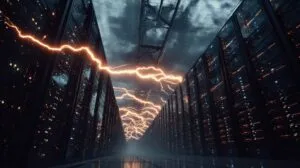We live in an era where surveillance cameras are just about everywhere, from your local grocery store to big chain supermarkets. While it’s easy to overlook the little cameras perched above you while shopping, they play an important role in keeping us safe, deterring theft, and protecting businesses.
But have you ever wondered just how long stores actually keep all that security footage? It’s not a one-size-fits-all answer when it comes to how long security footage is stored. The length of time stores keep their surveillance footage can vary depending on a few factors, but generally speaking, most businesses hold onto it for 30 to 90 days.
After that, the footage is typically overwritten or deleted unless there’s a specific reason to keep it longer.
Let’s break it down a bit more.
Table of Contents
ToggleCommon Retention Periods

Small Retail Stores
These businesses tend to have limited storage and usually keep footage for only a few days to a week. Small shops don’t often have a high volume of foot traffic or incidents that need lengthy reviews, so short-term storage is usually sufficient.
Supermarkets and Large Retail Chains
Bigger stores, especially those with lots of customers and potential for incidents, usually retain footage for 30 to 90 days. This gives them enough time to investigate anything that might pop up, from shoplifting to customer complaints.
Banks and Financial Institutions
Given the sensitive nature of financial transactions, banks are required to hold onto their footage for longer periods—sometimes up to 180 days or more, as per the U.S. Department of the Treasury.
These businesses have strict legal guidelines and need to store footage for compliance reasons.
Hotels and Hospitals
Institutions like hotels and hospitals also tend to keep their footage on hand for a while, often in the 30 to 90-day range.
For high-risk areas such as entrances, parking lots, or places where money exchanges hands, they may hold onto footage even longer.
Factors That Influence How Long Stores Keep Security Footage

What determines how long a store keeps its footage? A few key factors come into play:
1. Type of Business
Think about how different a small clothing boutique is from a large department store. For small businesses with less traffic and fewer incidents, there’s often no need to hold onto footage for months.
On the other hand, high-traffic areas like grocery stores or banks may need to keep an eye on things for a longer period.
2. Legal Requirements
Local laws and regulations sometimes dictate how long businesses must keep their footage. Some places have a minimum period, like 30 days, for which footage must be retained.
Industries with stricter regulations, like financial institutions, often have more extended retention requirements.
For instance, Mick Warncke explains that New York’s ATM Safety Act mandates that banking institutions must retain footage for a minimum of 45 days.
3. Storage Capacity
Storage plays a huge role. Older systems, especially those using physical storage like DVRs, often don’t have the space to keep footage for long. They might only hold onto a few days or weeks’ worth before overwriting the data.
Modern systems, however, using cloud-based storage or large hard drives, can store months’ worth of footage with no problem.
When Footage Needs to Be Kept Longer

There are some cases where businesses might hold onto footage for longer than usual. Let’s explore a few situations where this can happen:
Legal Evidence
Footage is sometimes used as evidence in lawsuits or criminal investigations. When that happens, businesses have to retain it until the legal process is finished, which could take months or even years. In these cases, the footage is set aside so it doesn’t get overwritten.
Employee Monitoring
Some businesses, especially those handling cash or valuable items, use security cameras to monitor employee behavior. If something suspicious is spotted, they may retain footage longer to review any potential misconduct.
Insurance Claims
Footage can be crucial in resolving insurance claims, especially if an incident like a customer slipping and falling occurs. In situations like these, businesses may hold onto the footage for the duration of the claims process, which could last several months.
Read Also: Do All Elevators Have Cameras – Are You Under Surveillance?
How Technology is Changing the Game

Advances in surveillance technology and fire systems have completely shifted the way businesses handle their security footage. With cloud-based systems and larger storage capacities, businesses can now store footage for much longer than before.
Some systems even offer practically unlimited storage, meaning businesses can keep their data for years if needed. Another game changer is artificial intelligence (AI).
Modern surveillance systems equipped with AI can help businesses manage their footage more effectively by automatically flagging important video clips and reducing the need to store irrelevant footage.
This means businesses can prioritize storing the clips that matter most, extending their retention without needing vast amounts of storage.
To explore cutting-edge AI-driven creative tools, check out Adobe Firefly’s Text-to-Image feature, which showcases the power of artificial intelligence in generating visual content.
Overwriting and Storage Management
Most surveillance systems are designed to overwrite old footage automatically once the storage reaches its limit. It’s a simple way to manage data and keep the system running smoothly without needing manual intervention.
But what happens when footage is flagged for investigation? In those cases, the flagged footage is typically saved separately from the rest and might be kept indefinitely or for as long as necessary to resolve an issue.
Best Practices for Managing Security Footage

It’s one thing to have security cameras installed, but it’s another to effectively manage and store all the footage. So how do businesses make sure they’re getting the most out of their surveillance systems? Here are a few best practices that many follow:
- Regularly Review and Update Policies: Businesses should revisit their security policies regularly to ensure they comply with any local laws and meet their current needs. As regulations or circumstances change, it’s crucial that their footage retention policies evolve too.
- Use Cloud Storage for Flexibility: Cloud-based storage offers greater flexibility in how long footage can be retained. It also reduces the risk of losing footage due to hardware malfunctions or physical damage.
- Protect Sensitive Footage: If footage is being used for legal or investigatory purposes, it needs to be stored securely to prevent accidental deletion or tampering.
- Set Different Retention Periods Based on Risk: Not all footage needs to be treated equally. For example, footage from high-risk areas (like entrances or cash registers) can be retained for longer periods, while footage from less critical areas can be overwritten more quickly.
Wrapping It All Up
How long do stores keep their security footage? It really comes down to the type of business, local laws, storage capacity, and how the footage is used. While most stores stick to the common range of 30 to 90 days, certain industries may retain footage for much longer based on their specific needs or legal requirements.
Advances in technology are making it easier for businesses to store footage longer and manage it more efficiently, ensuring they can keep their premises safe and secure without running into storage issues.
So next time you’re in your local supermarket or walking into a bank, just know that those little cameras above you are doing more than just recording—they’re working to protect everyone, and behind the scenes, there’s a whole process ensuring the footage is used wisely.
Related Posts:
- Is It Illegal to Have Cameras Inside Your House?
- 11 Types of CCTV Camera - Features and Best Uses
- Do All Elevators Have Cameras - Are You Under Surveillance?
- 26 Most Dangerous Cities in US - Updated Statistics for 2025
- Legal Guidelines When Editing Surveillance Footage in 2025
- Shoplifting in 2025 - Data, Trends, and Analysis








